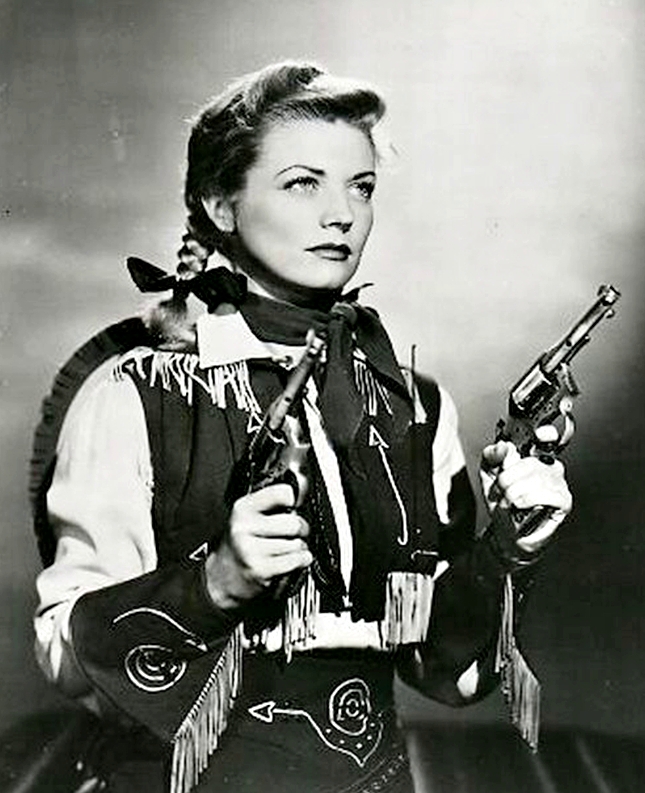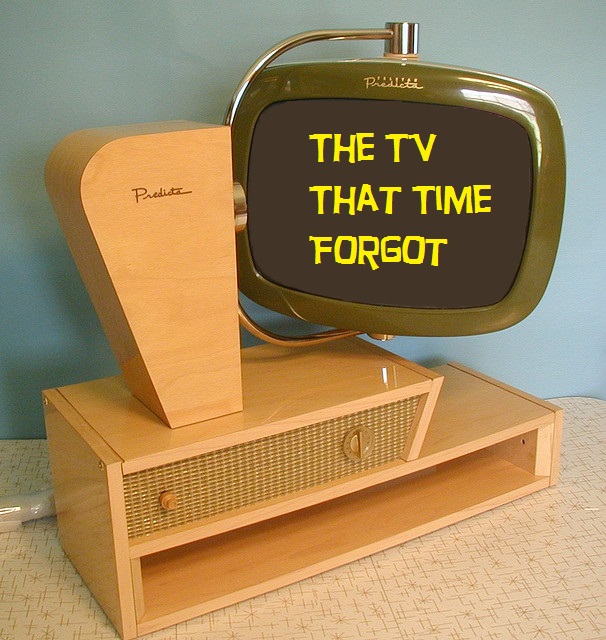 There was a time when Westerns dominated television programming so thoroughly that it was tough (with no home video, no streaming, and just 3 networks if you lived in a city big enough to have 3 TV stations) when the only way to avoid them was not to watch TV at all.
There was a time when Westerns dominated television programming so thoroughly that it was tough (with no home video, no streaming, and just 3 networks if you lived in a city big enough to have 3 TV stations) when the only way to avoid them was not to watch TV at all.
These were the wild and woolly days of the 1950s. There were also no reruns because television hadn’t been around long enough to accumulate them. So, it was a golden age for television syndication. These were fairly low-budget programs that were sold to individual stations to augment what was then the relative trickle of programming supplied by the likes of CBS, NBC, and ABC.
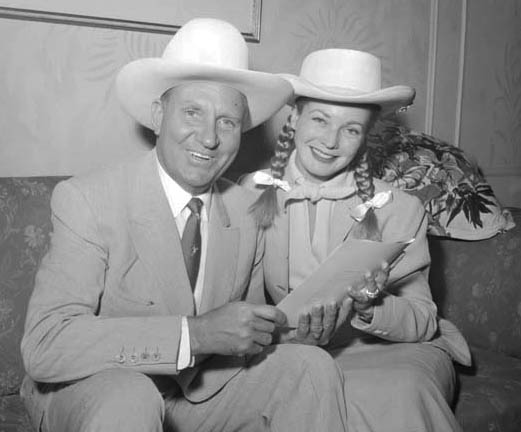 In 1953, singing cowboy star Gene Autry (always a shrewd businessman) had success bringing his own “adventures” to television and so bankrolled another series meant to showcase his protégé, a young woman who had served as his love interest in several motion pictures and who was rumored to be his real life side piece (if you know what we mean), Gail Davis.
In 1953, singing cowboy star Gene Autry (always a shrewd businessman) had success bringing his own “adventures” to television and so bankrolled another series meant to showcase his protégé, a young woman who had served as his love interest in several motion pictures and who was rumored to be his real life side piece (if you know what we mean), Gail Davis.
In those days, a good Western series was either based on a movie cowboy finally coming to TV (like Autry and Roy Rogers) or on an actual figure from the old west (like Wyatt Earp and Wild Bill Hickcock). So, Autry chose to make the series about legendary female sharpshooter Annie Oakley.
There were a couple of problems with this. One, while she was a talented rider and sharpshooter, Oakley never actually spent any time in the old West. She grew up in Ohio and then became part of Buffalo Bill’s traveling show. Two, her real name was not Oakley. It was Mosby. She changed her name when she got into show business.
Autry’s production team decided to just ignore all this and create a totally fictional version of Annie. In the show, she lived in the town of Diablo, Arizona, with her younger brother, Tagg. (The real-life Annie was a middle child in a family of 9 kids.) Annie’s TV uncle was the town’s sheriff, but was conveniently absent in most of the episodes, allowing Annie and her love interest, deputy sheriff Lofty Craig (Tagg? Lofty? Who was naming kids in this town?), to function as “the law in these here parts.”
Tagg was played by Jimmy Hawkins, while Brad Johnson was the square-jawed deputy sheriff. This actually formed a sort of surrogate family where Annie and Lofty could function as mother and father figures for Tagg while still leaving room for some flirting and jealousy between Annie and Lofty that would have been unthinkable for a married couple in 1950s TV. Tagg was always available for hostage duty or to engage in “hilarious youthful hijinks” as the scripts required.
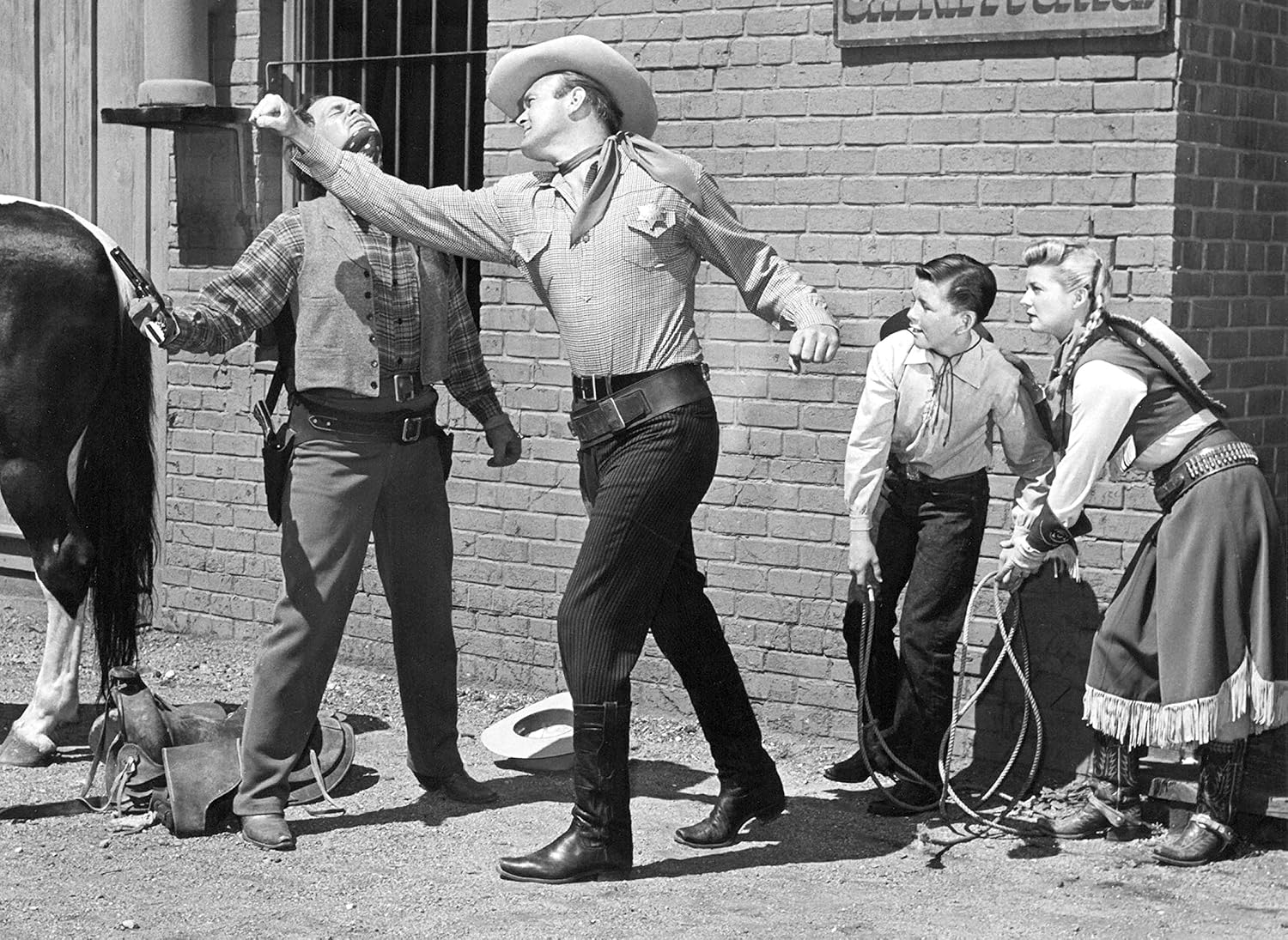
We were too young to notice, but many of the actors who played villains would return week after week under different names, to hold up various stagecoaches or trick Annie and/or Lofty into getting locked up in their own jail.
Davis was a good choice for the role, and not just because she may have been sleeping with the boss. She was a talented horse rider and sharpshooter in her own right. Gail was actually discovered by Autry while she was working in a traveling rodeo. For the show, she always wore her hair in pigtails and dressed in a fringe-covered cowgirl skirt, making television history by becoming the first female action hero.
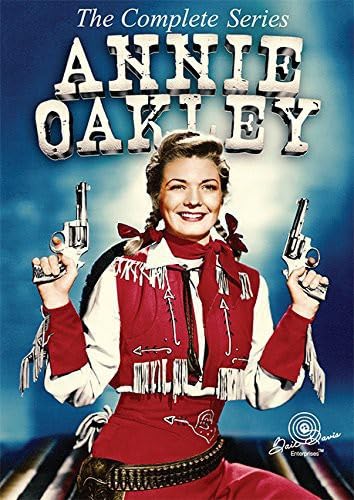 The show was filmed at Autry’s huge Melody Ranch, a sprawling movie and television production location used by many westerns of the era (including Gunsmoke). The show stayed in production from 1953 to 1956, producing 81 black and white episodes. Production ceased largely because Hawkins was quickly outgrowing his role as a kid brother. Annie Oakley ran in syndication beginning in January of 1954 until ABC decided to rerun the show, off and on, as part of their weekend programming from 1959 thru 1965. From there, it returned to syndication.
The show was filmed at Autry’s huge Melody Ranch, a sprawling movie and television production location used by many westerns of the era (including Gunsmoke). The show stayed in production from 1953 to 1956, producing 81 black and white episodes. Production ceased largely because Hawkins was quickly outgrowing his role as a kid brother. Annie Oakley ran in syndication beginning in January of 1954 until ABC decided to rerun the show, off and on, as part of their weekend programming from 1959 thru 1965. From there, it returned to syndication.
Davis, realizing she had been hopelessly typecast as Annie, retired from show business shortly after the series wrapped production. She was married three times, eventually moving to the San Fernando Valley with her third husband. She made many appearances later in life at western memorabilia shows and film festivals.
While all of the Annie Oakley episodes are available on home video, if you want a look at the actual life of the historic Annie Oakley, try the film version of the Broadway musical, Annie Get Your Gun. It sticks far closer to the actual truth than this much-beloved Baby Boomer TV Series.
